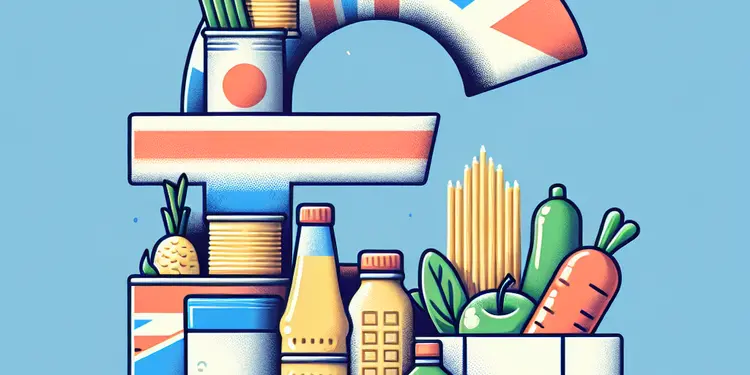
Find Help
More Items From Ergsy search
-
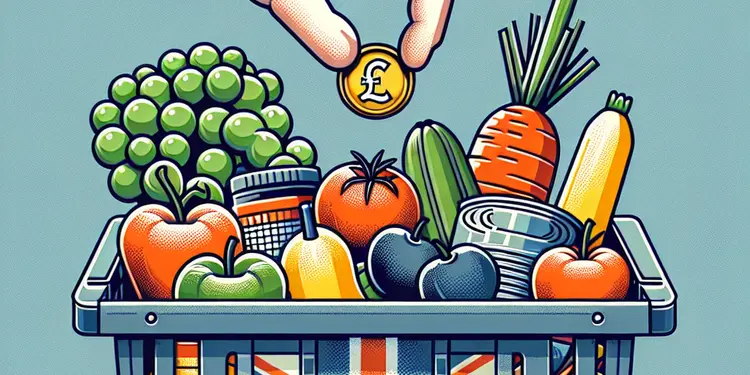
How do food banks get their food?
Relevance: 100%
-
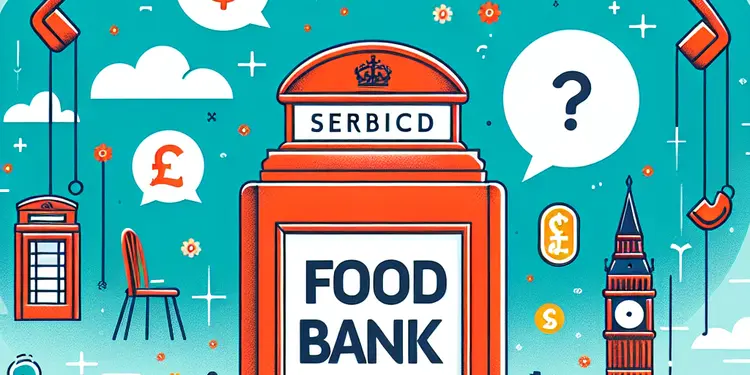
What is a food bank?
Relevance: 97%
-
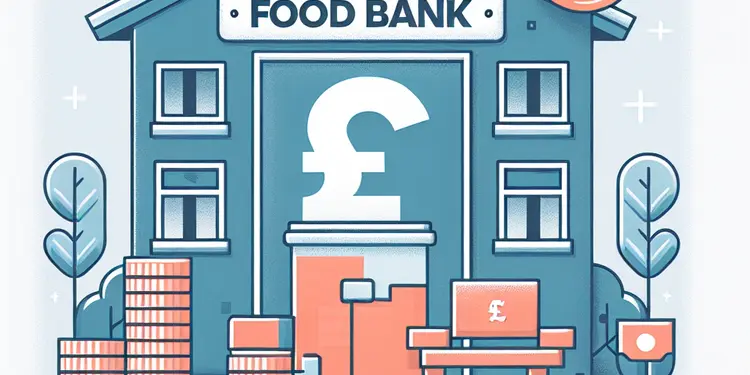
Is there a cost to receive food from a food bank?
Relevance: 97%
-
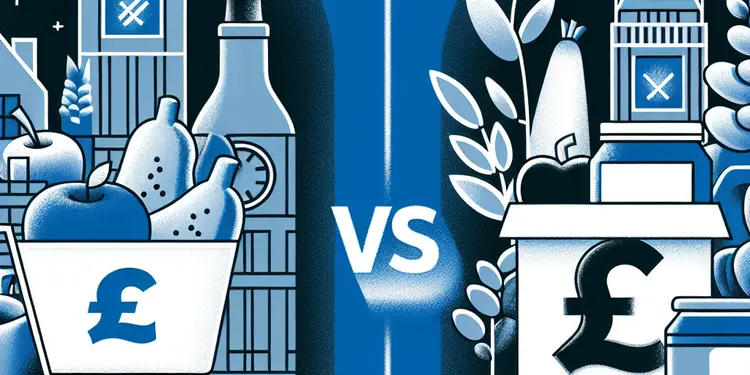
What is the difference between a food bank and a food pantry?
Relevance: 94%
-
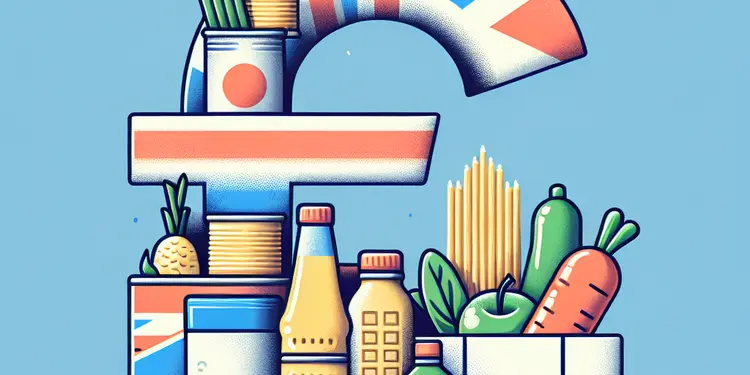
What types of food are typically available at a food bank?
Relevance: 93%
-
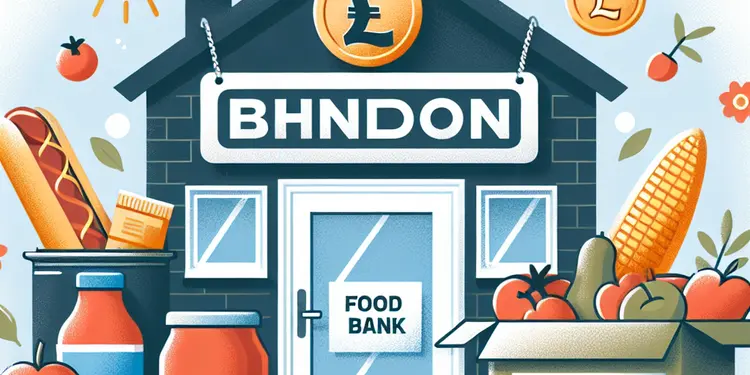
Are food banks open on weekends?
Relevance: 92%
-

What if there is no food bank near me?
Relevance: 89%
-
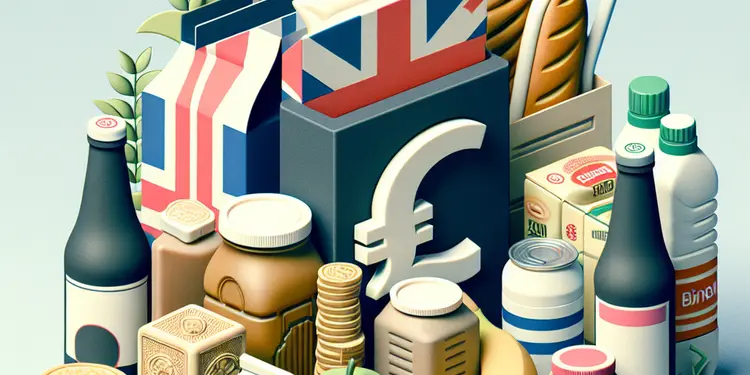
Is there a limit on how much food I can take from a food bank?
Relevance: 88%
-
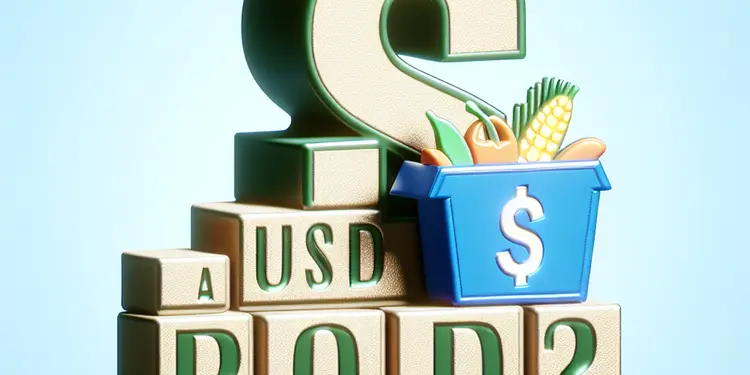
Can anyone use a food bank?
Relevance: 88%
-
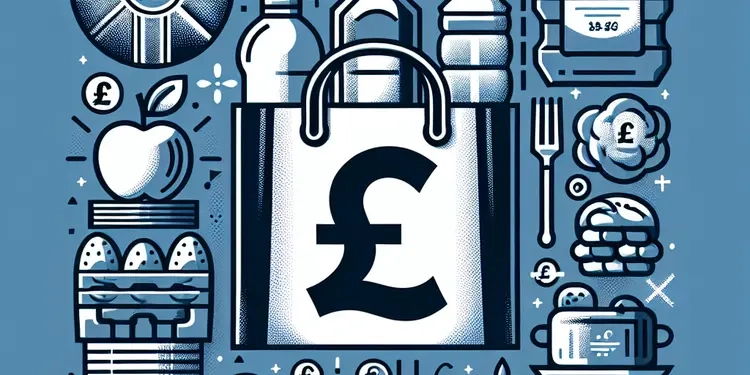
How can I access food banks?
Relevance: 88%
-
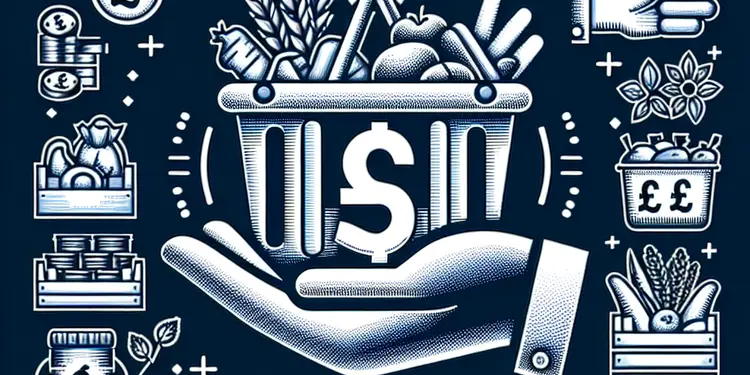
How can I support my local food bank?
Relevance: 84%
-
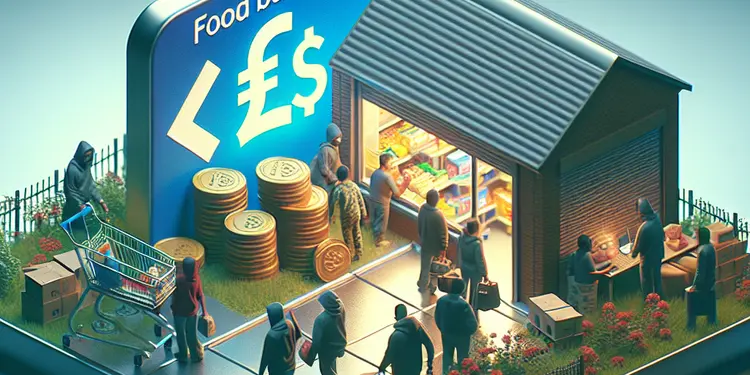
Can refugees or immigrants access food banks?
Relevance: 84%
-
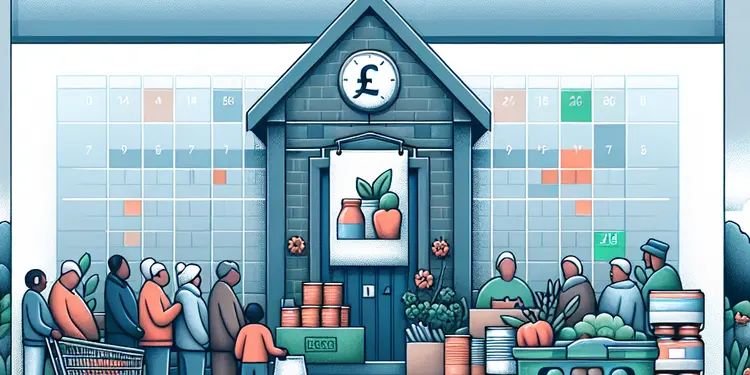
How often can I visit a food bank?
Relevance: 84%
-
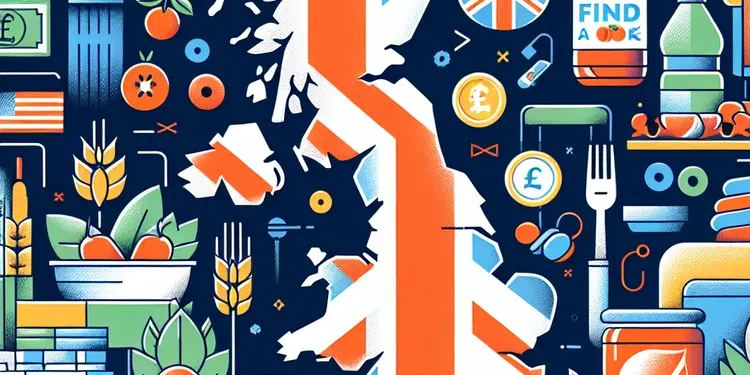
How can I find a food bank near me?
Relevance: 84%
-
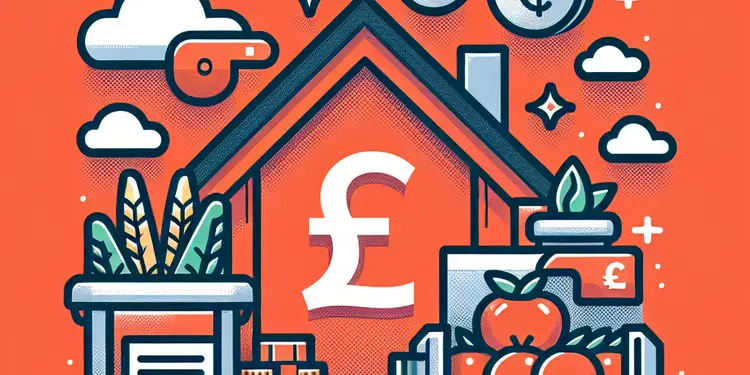
What information do I need to access a food bank?
Relevance: 84%
-
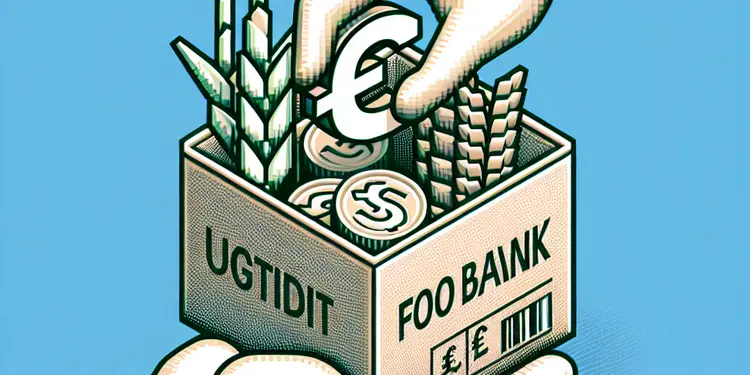
What if I can't physically visit a food bank?
Relevance: 84%
-

The Rise of Community Food Banks: Combating Hunger Locally
Relevance: 81%
-
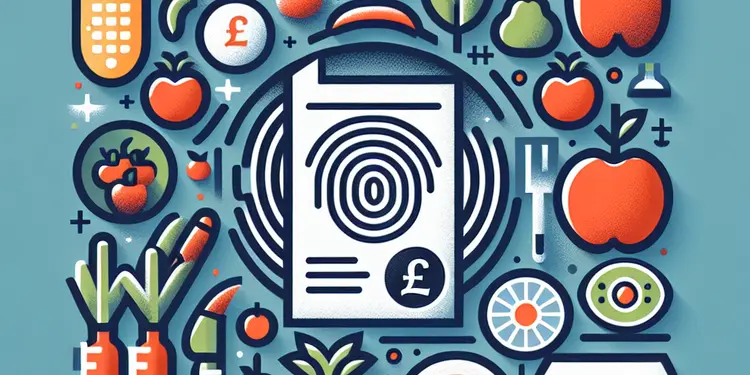
Do I have to provide personal information to access a food bank?
Relevance: 81%
-
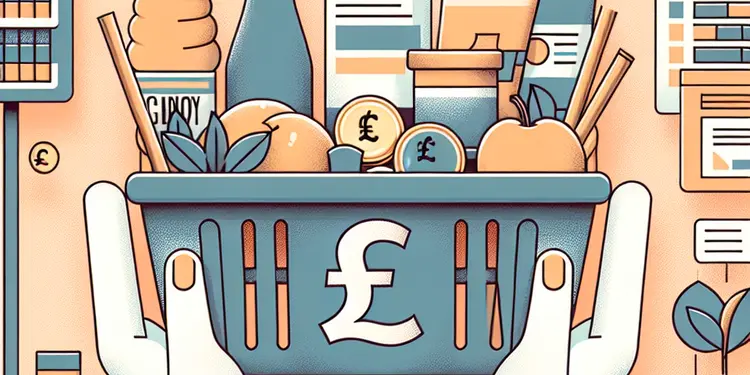
What should I bring with me when visiting a food bank?
Relevance: 81%
-

Rise in Food Bank Usage Amid Economic Challenges
Relevance: 81%
-
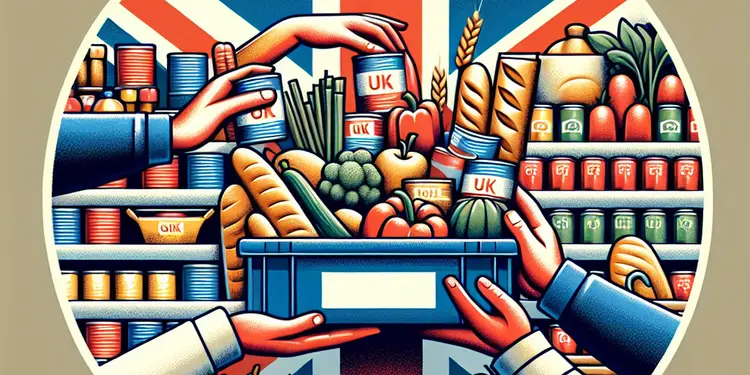
Can I volunteer at a food bank?
Relevance: 72%
-
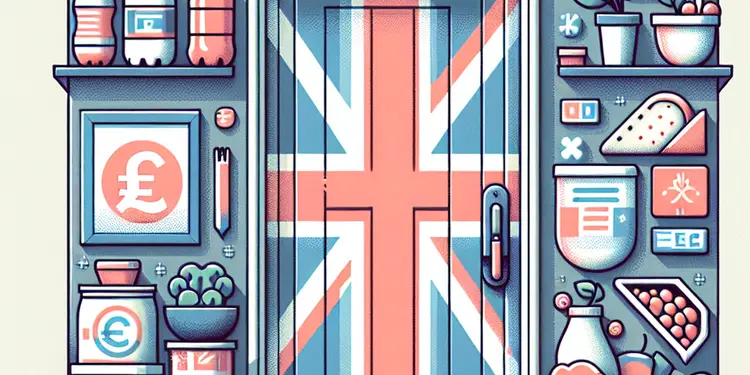
Do I need to make an appointment to visit a food bank?
Relevance: 64%
-

Charities Warn of Food Insecurity Amidst Rising Cost of Living
Relevance: 63%
-
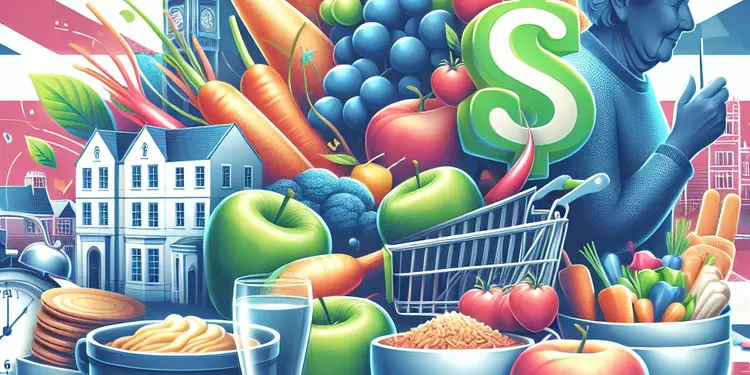
Are there any food assistance programs available for seniors?
Relevance: 59%
-

Can Ozempic be taken with food?
Relevance: 59%
-
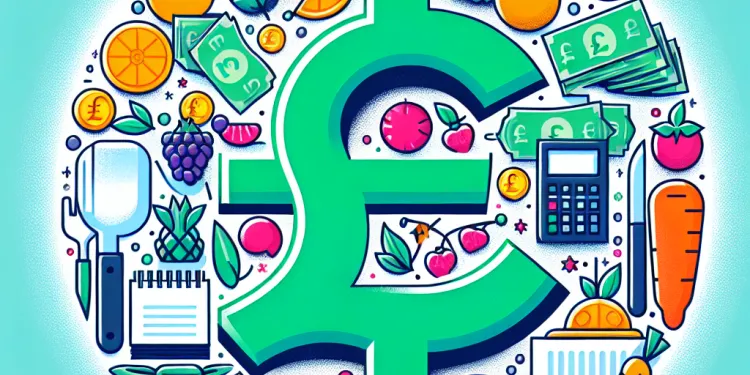
Are there any initiatives to reduce food waste in schools?
Relevance: 57%
-
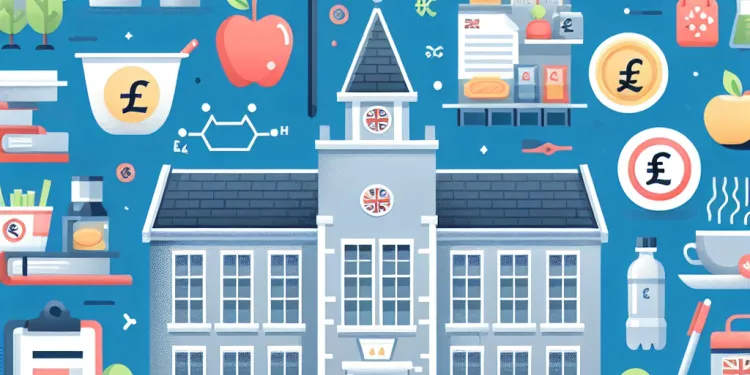
How are food allergies managed in UK schools?
Relevance: 56%
-
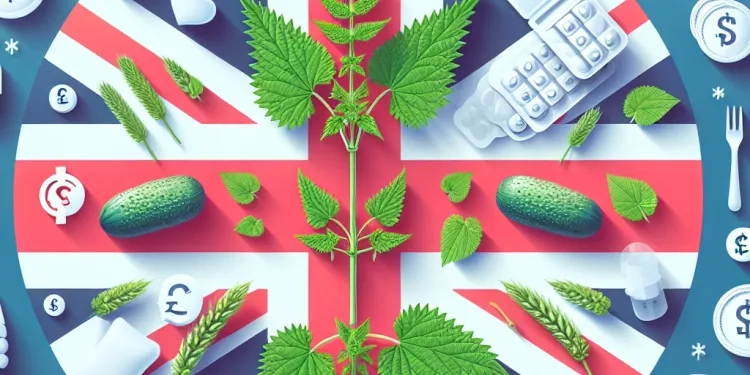
What foods can trigger nettle rash?
Relevance: 54%
-
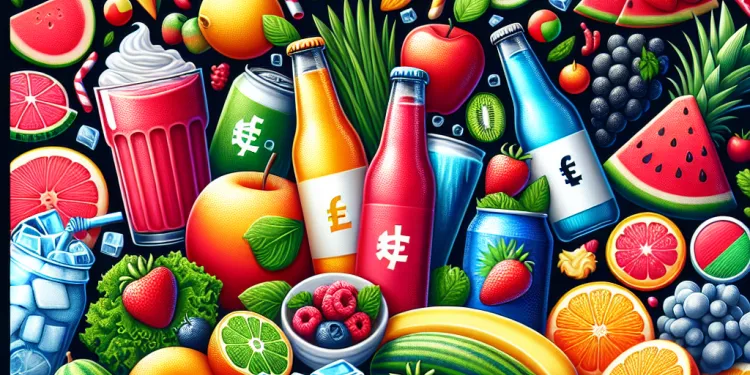
Can certain foods help me stay cool?
Relevance: 53%
-

What measures are taken to ensure food safety in school meals?
Relevance: 51%
-

What foods are best to eat during a heatwave?
Relevance: 51%
-
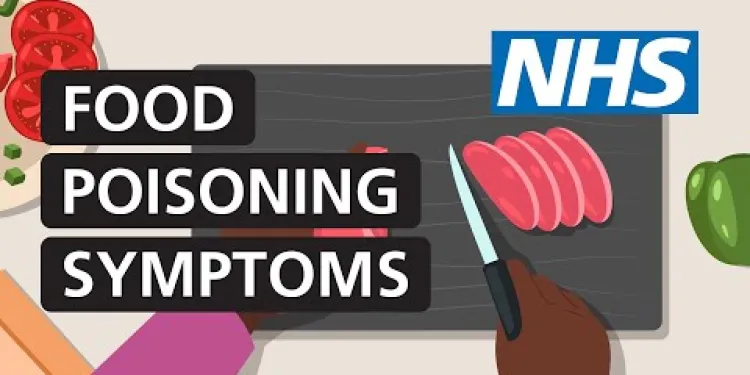
How to tell if you have food poisoning (symptoms) | NHS
Relevance: 51%
-
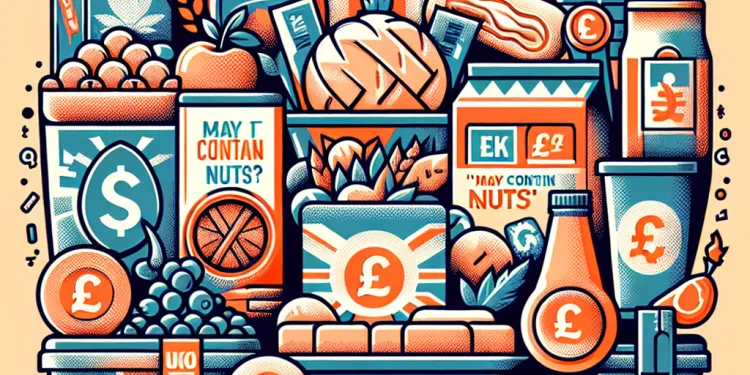
Is it safe to eat foods labeled as 'may contain nuts'?
Relevance: 50%
-

Are sugary drinks worse than sugary foods for causing tooth decay?
Relevance: 47%
-
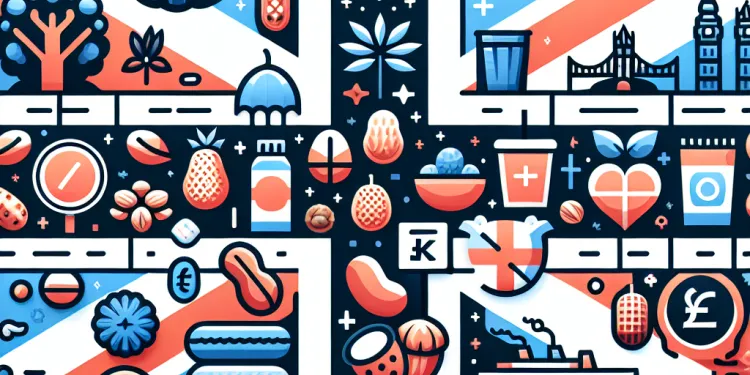
What foods should I avoid if I have a nut allergy?
Relevance: 40%
-
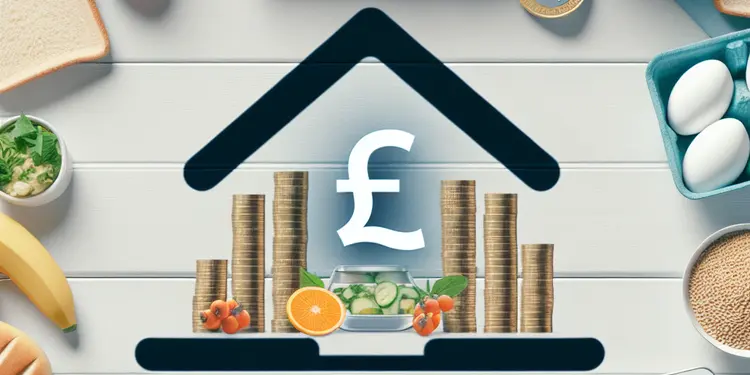
Can I get help with special dietary needs at a food bank?
Relevance: 39%
-

Do online banks have lower fees than traditional banks?
Relevance: 33%
-

Do online banks offer investment options?
Relevance: 30%
-

Is advice from my bank on pensions reliable?
Relevance: 30%
-

Is it easy to switch banks to Monzo or Revolut?
Relevance: 29%
Introduction to Food Banks
Food banks in the UK provide essential support to individuals and families facing food insecurity. They collect and distribute donated food to those in need, helping to alleviate hunger in communities. Their primary aim is to supply balanced and nutritious foods, ensuring that recipients can maintain a healthy diet despite financial difficulties. Understanding what types of food are typically available at a food bank can help donors know what to contribute and inform users what to expect.
Staple Foods
Food banks generally stock staple foods that have a long shelf-life and are versatile in usage. These staples are crucial as they form the foundation of many meals. Typical staples include pasta, rice, and a variety of cereals. These items are chosen for their durability and the fact that they provide essential carbohydrates and fibre, forming a vital part of the diet.
Canned and Jars of Food
Canned foods are predominant in food banks as they are non-perishable and can be stored safely for an extended period. Common canned items include beans, soup, vegetables, and fish such as tuna or salmon. These provide important nutrients, including protein and vitamins. Additionally, jars of sauces, such as pasta sauce or curry sauce, are commonly available to help transform basic ingredients into complete meals.
Dairy Products
Powdered or long-life milk is often provided, as it requires no refrigeration and has a long expiration date. Some food banks may also offer vouchers for fresh dairy products where feasible, acknowledging that these are integral for calcium and vitamin intake.
Protein Sources
Protein is essential in any diet, and food banks strive to include sources of protein. While canned meats and fish are popular options due to their longevity, food banks sometimes distribute dried lentils, beans, and legumes, which are excellent sources of plant-based protein. Peanut butter is another staple often supplied, appreciated for its energy-dense nutrition and shelf stability.
Fruit and Vegetables
Fresh produce can be less predictable at food banks due to its perishable nature, but when available, it is distributed as quickly as possible. More commonly, food banks stock canned or dried fruits and vegetables, ensuring recipients still have access to the vitamins and minerals these foods provide. Occasionally, frozen vegetables are also available.
Conclusion
Food banks play a pivotal role in supporting those facing economic hardship by providing them with essential food items. By focusing on foods with a longer shelf-life, they ensure a consistent availability of nutritious foods that can help maintain a balanced diet. Understanding the types of food typically available helps in both utilizing and supporting food banks effectively.
Introduction to Food Banks
Food banks in the UK help people who cannot afford enough food. They collect and give out food to families and individuals who need it. Their main goal is to give healthy food so that everyone can have a balanced diet even when money is tight. Knowing what food is usually at a food bank can help people donate the right items and help users know what they might get.
Staple Foods
Food banks keep basic foods that last a long time and can be used in many ways. These basic foods are important because they are used in many meals. Common staples are pasta, rice, and cereals. These foods last long and give important nutrients like carbohydrates and fibre, which are important for diets.
Canned and Jars of Food
Food banks have a lot of canned foods because they last a long time without going bad. Canned foods include beans, soup, vegetables, and fish like tuna. These foods give protein and vitamins. Jars of pasta sauce or curry sauce are also common to help make meals with basic ingredients.
Dairy Products
Food banks often have powdered or long-life milk because it does not need a fridge and lasts a long time. Some food banks give vouchers to get fresh dairy products too. Dairy is important for calcium and vitamins.
Protein Sources
Protein is very important, and food banks try to provide it. Canned meats and fish are popular because they last long. Food banks also give dried lentils, beans, and legumes, which are good for plant-based protein. Peanut butter is also given because it has lots of energy and lasts long.
Fruit and Vegetables
Fresh fruits and vegetables are not always at food banks because they go bad quickly, but they are given out quickly when available. Food banks often have canned or dried fruits and vegetables, so people can get vitamins and minerals. Sometimes they have frozen vegetables too.
Conclusion
Food banks are very important in helping people who need food. They focus on foods that last a long time to make sure people have a steady supply of healthy foods. Knowing what food is available can help in supporting and using food banks well.
Frequently Asked Questions
What is a food bank?
A food bank is a non-profit organization that collects and distributes food to hunger-relief charities.
Are fresh fruits and vegetables available at food banks?
Yes, many food banks offer fresh fruits and vegetables depending on seasonal availability and donations.
Can I find canned goods at a food bank?
Yes, canned goods such as vegetables, fruits, beans, and soups are staples at food banks.
Do food banks provide dairy products?
Some food banks offer limited dairy products like milk, cheese, or yogurt, often relying on donations.
Are there any meat or protein products available at food banks?
Yes, some food banks offer meat or protein options such as canned tuna, chicken, or occasionally fresh meat.
Is bread available at food banks?
Bread is commonly available at food banks, often donated by local bakeries and grocery stores.
Can I find pasta and rice at a food bank?
Yes, pasta, rice, and other grains are frequently offered at food banks as they are non-perishable staples.
Are beverages offered at food banks?
Some food banks provide beverages such as juice, bottled water, or shelf-stable milk on occasion.
What types of snacks are available at food banks?
Food banks may offer snacks like granola bars, crackers, or dried fruits depending on available donations.
Do food banks cater to special dietary needs?
Some food banks offer options for specific dietary needs like gluten-free or low-sodium foods, but availability can vary.
Are there baby food and formula available at food banks?
Many food banks try to provide baby food, formula, and diapers when available, focusing on family needs.
What about pet food at food banks?
Some food banks also stock pet food to assist families in need who have pets.
Can non-food items be found at food banks?
Yes, many food banks provide non-food essentials like toiletries, personal hygiene products, and household items.
Is there a limit to how much food I can take from a food bank?
Most food banks have policies to ensure fair distribution, often based on family size and need.
How do food banks get their supplies?
Food banks receive supplies through donations from individuals, grocery stores, manufacturers, and community drives.
What types of prepared meals might be available?
Some food banks offer prepared meals or meal kits, especially those partnered with local restaurants and kitchens.
Do food banks offer ethnic or culturally specific foods?
Certain food banks may strive to include culturally appropriate foods, particularly in ethnically diverse areas.
Are vegetarian or vegan options available at food banks?
While not guaranteed, some food banks do offer vegetarian and vegan options, depending on donations.
Do food banks offer condiments and spices?
Sometimes food banks will have basic condiments and spices available to enhance cooking at home.
Are desserts or sweets available at food banks?
Occasionally, food banks provide sweets like cookies or pastries, usually based on donations from local businesses.
What is a food bank?
A food bank is a place that gives free food to people who need help. The food is for people who do not have enough money to buy it themselves.
If you need food or know someone who does, you can go to a food bank. You might need to bring some papers to show who you are.
You can also help food banks by giving them food or money. They need these things to help more people.
Some helpful tools are:
- Pictures or videos about food banks
- Asking a friend or family member to explain
- Use a dictionary for difficult words
A food bank is a place that helps people who need food. They collect food and give it to groups that help hungry people.
Can you get fresh fruits and vegetables at food banks?
Yes, you can get fresh fruits and vegetables at food banks. They give you healthy food to eat.
If you want help with reading, you can ask someone to read with you. You can also use apps that read texts out loud.
Yes, lots of food banks give out fresh fruits and veggies. They have them when people donate or when it's the right season for those foods.
Can I get canned food from a food bank?
Yes, you can! A food bank gives out food to people who need it. You might find canned food there.
If you find reading hard, ask someone to help you read. Or use a tool that reads the words out loud.
If you have more questions, you can ask a helper at the food bank.
Yes, food banks often have canned foods like vegetables, fruits, beans, and soups.
Do food banks give milk and cheese?
Some food banks give out a little bit of milk, cheese, or yogurt. They often get these from donations.
Do food banks have meat or protein foods?
Yes, some food banks give out meat or food with protein. They might have canned tuna, chicken, or sometimes fresh meat.
Can you get bread at food banks?
Bread is usually found at food banks. Local bakeries and grocery stores often give it to them.
Can I get pasta and rice at a food bank?
Yes, food banks often have pasta and rice. They help people who need food.
Here are some tips to get help from a food bank:
- Look online for a food bank near you. Use a computer or ask someone to help.
- Call the food bank to ask what they have. They may tell you the best time to visit.
- Bring a bag to carry the food home.
If reading is hard, you can use a tool that reads the text out loud. This can help you understand better.
Yes, food banks often give out pasta, rice, and other grains because they last a long time without going bad.
Do food banks give out drinks?
Food banks help people by giving them food. They might also give drinks. These could be things like:
- Water
- Juice
- Milk
- Tea
- Soft drinks
If you want to know what a food bank near you has, you can ask them. They will tell you what drinks they can give. You can also ask for help if it’s hard to ask questions or understand the answers. A friend or a family member can support you.
Sometimes, food banks will give out drinks like juice, bottled water, or milk that lasts a long time without going bad.
What snacks can you get at food banks?
Food banks are places where people can get free food. They help people who need more to eat.
You can find these snacks at food banks:
- Fruit: You might get fresh fruit like apples and bananas.
- Canned Fruit: This is fruit that comes in a tin, like peaches or pineapples.
- Cereal Bars: These are bars made from oats and sometimes have fruit or chocolate.
- Chips: You might find bags of chips or crisps.
- Nuts: These are crunchy and healthy snacks.
- Crackers: These are crispy and can be eaten plain or with cheese.
Some helpful tools:
- Pictures: Looking at pictures of snacks can help you choose which ones you like.
- Helpers: Ask someone to help you find your favorite snacks at the food bank.
Food banks might have snacks like granola bars, crackers, or dried fruits. It depends on what people donate.
Do food banks provide food for different diets?
Food banks help people get food. Sometimes, people need special foods. This can be because of allergies, health, or beliefs.
Food banks try to have different foods for everyone. But it's good to ask them if they have the foods you need.
If you have trouble reading, a friend or a family member can help. You can also use a screen reader to read the text out loud.
Some food banks have special foods for people who need gluten-free or low-salt foods. But not all food banks have these foods all the time.
Can you get baby food and formula at food banks?
Food banks can give you baby food and formula.
If you need help with baby food, you can ask at a food bank.
Here are some tips to help you:
- Visit or call your local food bank. They can tell you more.
- Bring your own bag to carry the food home.
- Ask for help if you don't understand something. Food bank workers are there to help you.
Many food banks try to give baby food, formula, and diapers when they have them. They focus on what families need.
Can food banks give pet food?
Some food banks can help with pet food. Not all food banks have pet food. It's good to ask your local food bank if they have food for pets.
Here are some tips to help you find pet food:
- Check with animal shelters. They might have extra food for pets.
- Look online for groups that give pet food to those in need.
- Ask friends or family if they know where to find pet food.
Some food banks also have pet food. This helps families who have pets and need support.
Do food banks have things that are not food?
Yes, many food banks give out non-food items. These include things like soap, shampoo, and items for your house.
Can I take as much food as I want from a food bank?
Food banks help people who need food. You might only be able to take a certain amount, so everyone gets some food.
Ask the people at the food bank. They can tell you how much food you can take.
If you need more help, you can ask a friend or family member to go with you to the food bank.
Food banks have rules to make sure everyone gets a fair share. They look at how big your family is and what you need.
How do food banks get their supplies?
Food banks get their food from lots of places. People, shops, and farms give them food. This is called a donation.
Sometimes, food banks buy food if they need more.
Food banks also work with groups to get more supplies.
If you want to learn more, you can use audiobooks or videos to help you understand better.
Food banks get food from people who give it away, from grocery stores, from companies that make food, and from groups in the community that collect food together.
What kinds of ready meals can you get?
Ready meals are foods you can eat without cooking. Here are some kinds you might find:
- Frozen Dinners: Meals you keep in the freezer. You heat them in the microwave.
- Canned Meals: Meals in cans. You can heat them or eat them right away.
- Salads: Fresh and ready to eat. They come with dressing.
- Sandwiches: Ready to eat with different fillings like cheese or ham.
- Snacks: Like chips, nuts, or fruit bars. Easy to grab and eat.
Tools that can help:
- Microwave: Heats food quickly.
- Can Opener: Opens canned meals.
Some food banks give out ready-to-eat meals or meal kits. They do this with help from local restaurants and kitchens.
Do food banks have foods for people from different cultures?
Some food banks try to give foods that are important to different cultures. This is especially true in places where many different kinds of people live.
Can you get vegetarian or vegan food at food banks?
Some food banks might have vegetarian and vegan food. It depends on what people give.
Do food banks have sauces and spices?
Food banks sometimes have sauces and spices. It depends on what people give to them. You can ask the food bank if they have what you need.
Here are some tips to help:
- Call the food bank to ask questions.
- Visit the food bank's website for more information.
- Ask a friend or family member to help you.
Food banks sometimes have simple sauces and spices. You can use them to make your food taste better when you cook at home.
Do food banks have treats like cakes or candies?
Sometimes, food banks give out treats like cookies or cakes. This usually happens when local shops donate them.
Useful Links
- Ergsy carfully checks the information in the videos we provide here.
- Videos shown by Youtube after a video has completed, have NOT been reviewed by ERGSY.
- To view, click the arrow in centre of video.
- Most of the videos you find here will have subtitles and/or closed captions available.
- You may need to turn these on, and choose your preferred language.
- Go to the video you'd like to watch.
- If closed captions (CC) are available, settings will be visible on the bottom right of the video player.
- To turn on Captions, click settings .
- To turn off Captions, click settings again.
More Items From Ergsy search
-

How do food banks get their food?
Relevance: 100%
-

What is a food bank?
Relevance: 97%
-

Is there a cost to receive food from a food bank?
Relevance: 97%
-

What is the difference between a food bank and a food pantry?
Relevance: 94%
-

What types of food are typically available at a food bank?
Relevance: 93%
-

Are food banks open on weekends?
Relevance: 92%
-

What if there is no food bank near me?
Relevance: 89%
-

Is there a limit on how much food I can take from a food bank?
Relevance: 88%
-

Can anyone use a food bank?
Relevance: 88%
-

How can I access food banks?
Relevance: 88%
-

How can I support my local food bank?
Relevance: 84%
-

Can refugees or immigrants access food banks?
Relevance: 84%
-

How often can I visit a food bank?
Relevance: 84%
-

How can I find a food bank near me?
Relevance: 84%
-

What information do I need to access a food bank?
Relevance: 84%
-

What if I can't physically visit a food bank?
Relevance: 84%
-

The Rise of Community Food Banks: Combating Hunger Locally
Relevance: 81%
-

Do I have to provide personal information to access a food bank?
Relevance: 81%
-

What should I bring with me when visiting a food bank?
Relevance: 81%
-

Rise in Food Bank Usage Amid Economic Challenges
Relevance: 81%
-

Can I volunteer at a food bank?
Relevance: 72%
-

Do I need to make an appointment to visit a food bank?
Relevance: 64%
-

Charities Warn of Food Insecurity Amidst Rising Cost of Living
Relevance: 63%
-

Are there any food assistance programs available for seniors?
Relevance: 59%
-

Can Ozempic be taken with food?
Relevance: 59%
-

Are there any initiatives to reduce food waste in schools?
Relevance: 57%
-

How are food allergies managed in UK schools?
Relevance: 56%
-

What foods can trigger nettle rash?
Relevance: 54%
-

Can certain foods help me stay cool?
Relevance: 53%
-

What measures are taken to ensure food safety in school meals?
Relevance: 51%
-

What foods are best to eat during a heatwave?
Relevance: 51%
-

How to tell if you have food poisoning (symptoms) | NHS
Relevance: 51%
-

Is it safe to eat foods labeled as 'may contain nuts'?
Relevance: 50%
-

Are sugary drinks worse than sugary foods for causing tooth decay?
Relevance: 47%
-

What foods should I avoid if I have a nut allergy?
Relevance: 40%
-

Can I get help with special dietary needs at a food bank?
Relevance: 39%
-

Do online banks have lower fees than traditional banks?
Relevance: 33%
-

Do online banks offer investment options?
Relevance: 30%
-

Is advice from my bank on pensions reliable?
Relevance: 30%
-

Is it easy to switch banks to Monzo or Revolut?
Relevance: 29%


